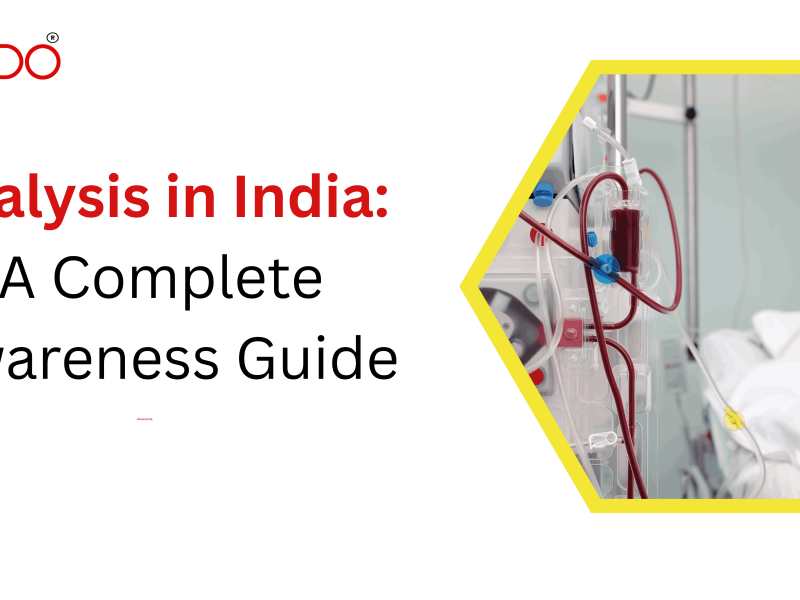In today’s fast-paced medical world, diagnostic imaging plays a critical role in identifying and managing health conditions with speed and precision. Among the most widely used imaging techniques are MRI (Magnetic Resonance Imaging) and CT (Computed Tomography) scans. While both produce detailed images of the body’s internal structures, they do so using entirely different technologies—and are recommended in different scenarios based on the patient’s condition.
For many patients, the terms MRI and CT scan are often used interchangeably, leading to confusion about which scan is better, safer, or more appropriate. Should you be concerned about radiation exposure? Which scan is more effective for detecting tumors, injuries, or organ damage? When should you opt for an MRI over a CT scan?
In this comprehensive guide, we break down everything you need to know about MRI and CT scans from how they work and when they’re used to their advantages, limitations, and safety factors.
Whether you’re preparing for a scan or simply curious, this blog will give you clarity and confidence when it comes to choosing the right imaging test for you or your loved ones.
What is an MRI Scan?
MRI (Magnetic Resonance Imaging) is a non-invasive imaging test that uses powerful magnets and radio waves to create detailed images of organs, tissues, and other structures inside the body.
Unlike X-rays and CT scans, MRI does not use ionizing radiation. It produces high-resolution images that are especially useful for soft tissues like the brain, muscles, ligaments, and internal organs.
Key Features of MRI:
-
Uses strong magnetic fields and radio waves
-
No radiation exposure
-
Best for soft tissues
-
Longer scanning time (30–60 minutes)
-
Noisy machine; patient may need ear protection
-
Requires staying still inside a narrow tube
What is a CT Scan?
CT (Computed Tomography), also known as a CAT scan, uses X-rays and computer processing to create cross-sectional images (slices) of the body. It combines multiple X-ray images taken from different angles and processes them to form a detailed 3D image.
CT scans are faster than MRI scans and are often the first imaging test used in emergency situations.
Key Features of CT:
-
Uses X-rays (ionizing radiation)
-
Quick imaging (few minutes)
-
Excellent for bone structures and detecting internal bleeding
-
Widely available
-
Open machine, less claustrophobic
Key Differences Between MRI and CT Scan
| Feature | MRI Scan | CT Scan |
|---|---|---|
| Technology | Magnetic fields & radio waves | X-rays |
| Radiation Exposure | None | Yes (ionizing radiation) |
| Image Quality | Superior for soft tissues | Better for bones & internal bleeding |
| Scan Duration | 30–60 minutes | 5–10 minutes |
| Noise Level | Loud (requires earplugs) | Quiet |
| Patient Comfort | Narrow tunnel, may cause claustrophobia | Open, more comfortable |
| Cost | More expensive | Less expensive |
| Common Uses | Brain, spine, joints, heart, tumors | Trauma, lungs, bones, abdomen |
| Safety with Implants | Unsafe with metal implants | Generally safe |
How Does an MRI Work?
An MRI machine creates a powerful magnetic field that aligns the hydrogen atoms in the body. When radio waves are applied, these atoms emit signals that the machine detects. A computer then converts these signals into detailed images.
Because of its ability to differentiate between soft tissues, MRI is highly effective in detecting:
-
Brain tumors and stroke
-
Spinal cord injuries
-
Ligament and tendon tears
-
Heart conditions
-
Abnormalities in internal organs
How Does a CT Scan Work?
A CT scanner emits a series of X-ray beams from different angles around the body. A computer processes these beams to create detailed cross-sectional images. It’s similar to looking at slices of a loaf of bread.
CT scans are widely used in:
-
Trauma and emergency situations
-
Diagnosing lung and chest diseases
-
Detecting cancers and internal injuries
-
Guiding biopsies and surgeries
-
Monitoring response to treatment
When Do Doctors Recommend MRI?
Doctors may recommend an MRI if they need high-resolution images of soft tissues. It is particularly valuable in:
-
Neurology: Brain tumors, multiple sclerosis, stroke
-
Orthopedics: Joint, ligament, cartilage damage
-
Cardiology: Heart muscle damage, congenital defects
-
Oncology: Tumor detection, cancer staging
-
Spinal issues: Disc herniation, spinal cord compression
MRI is often preferred when more detail is needed or when radiation exposure is to be avoided, especially for children and pregnant women.
When Do Doctors Recommend CT Scan?
CT scans are the first line of imaging for acute conditions due to their speed and clarity. Doctors prefer CT scans in:
-
Trauma cases: To quickly identify bleeding or fractures
-
Head injuries: To detect brain swelling or bleeding
-
Abdominal pain: Appendicitis, kidney stones, liver issues
-
Lung conditions: Pneumonia, pulmonary embolism, tumors
-
Cancer monitoring: To track tumor size and spread
CT is generally recommended when speed is crucial or when examining bone structures and internal organs.
Pros and Cons of MRI
Pros:
-
No radiation
-
Superior image quality for soft tissues
-
Ideal for neurological and musculoskeletal issues
-
Multi-planar imaging capabilities
Cons:
-
Expensive
-
Time-consuming
-
Not suitable for people with metal implants, pacemakers
-
May cause claustrophobia
-
Loud noise during scan
Pros and Cons of CT Scan
Pros:
-
Quick and widely available
-
Excellent for emergency diagnostics
-
Cheaper than MRI
-
Great for bone and lung imaging
Cons:
-
Radiation exposure
-
Less detail for soft tissue structures
-
Not ideal for long-term repeated scans
Safety Considerations
MRI Safety:
-
Not suitable for: Patients with pacemakers, metal implants, cochlear implants, certain aneurysm clips
-
Patients may need contrast dye (gadolinium), which is generally safe but not advisable for those with kidney issues
CT Scan Safety:
-
Uses ionizing radiation; repeated exposure may increase long-term risks
-
May require iodine-based contrast dye, which can trigger allergies or affect kidney function
-
Not generally used during pregnancy unless absolutely necessary
Preparation Before a Scan
For MRI:
-
Wear loose, metal-free clothing
-
Remove all metallic objects (jewelry, hairpins, belts, etc.)
-
Inform technician if you have implants or are pregnant
-
Fast for a few hours if contrast dye is used
For CT Scan:
-
May require fasting
-
Inform doctor about any allergies to contrast dye
-
Remove metallic objects
-
Hydrate well post-scan to flush out contrast
MRI and CT Scan Cost in India
The cost varies based on the body part being scanned, location, and whether contrast dye is used.
| Scan Type | Cost Range (INR) |
|---|---|
| MRI Scan (Brain/Spine/Joints) | ₹5,000 – ₹15,000 |
| CT Scan (Head/Chest/Abdomen) | ₹2,000 – ₹8,000 |
Disclaimer: The prices mentioned above are approximate and may vary based on the city, diagnostic center, body part being scanned, use of contrast dye, and other factors. For accurate and updated pricing, please consult with your nearest diagnostic provider.
Which One is Right for You?
Choosing between an MRI and a CT scan depends on several factors:
-
The organ or body part being examined
-
Nature of the symptoms
-
Urgency of the diagnosis
-
Medical history and presence of implants
-
Budget and insurance coverage
General Rule of Thumb:
-
Use MRI for brain, spinal cord, joints, and soft tissues.
-
Use CT for trauma, internal bleeding, lungs, and bone injuries.
Your doctor will always guide you based on your specific case. Never hesitate to ask why a particular scan is recommended and what the risks and benefits are.



